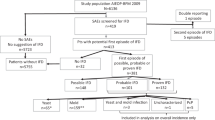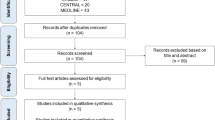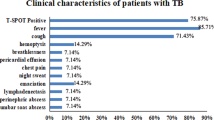Abstract
We compared the efficacy and safety of empirical plus PCR-based vs empirical liposomal amphotericin B treatment after Allo-SCT. Allo-SCT recipients were randomized to receive either PCR-based preemptive therapy (group A; n=198) or empirical antifungal therapy (group B; n=211) with liposomal amphotericin B. In group A, therapy was started after one positive PCR result or after 120 h of febrile neutropenia refractory to broad-spectrum antibacterial therapy. In group B, liposomal amphotericin B was started after 120 h of refractory febrile neutropenia. Demographic and clinical characteristics were well balanced. A total of 112 (57.1%) patients in group A and 76 (36.7%) patients in group B received antifungal therapy (P<0.0001). Twelve patients in group A and 16 patients in group B developed proven invasive fungal infection (IFI). Survival curves showed better survival until day 30 when close PCR monitoring was performed (mortality 1.5 vs 6.3%; P=0.015), but there was no difference at day 100. At day 100, no difference was observed in the incidence of IFI (primary end point) and survival between the two arms. Further studies are required to assess the benefit of using PCR in patients after SCT.
This is a preview of subscription content, access via your institution
Access options
Subscribe to this journal
Receive 12 print issues and online access
$259.00 per year
only $21.58 per issue
Buy this article
- Purchase on Springer Link
- Instant access to full article PDF
Prices may be subject to local taxes which are calculated during checkout



Similar content being viewed by others
References
Hebart H, Einsele H . Specific infectious complications after stem cell transplantation. Support Cancer Care 2004; 12: 80–85.
Lin SJ, Schranz J, Teutsch SM . Aspergillosis case-fatality rate: systematic review of literature. Clin Infect Dis 2001; 32: 358–366.
Viscoli C, Girmenia C, Marinus A, Colette L, Martino P, Vandercam B et al. Candidemia in cancer patients: a prospective, multicenter surveillance study by the Invasive Fungal Infection Group (IFIG) of the European Organization for Research and Treatment of Cancer (EORTC). Clin Infect Dis 1999; 28: 1071–1079.
Marr KA, Carter RA, Crippa F, Wald A, Corey L . Epidemiology and outcome of mould infections in haematopoietic stem cell transplant recipients. Clin Infect Dis 2002; 34: 909–917.
Chamilos G, Luna M, Lewis RE, Bodey GP, Chemaly R, Tarrand JJ et al. Invasive fungal infections in patients with hematologic malignancies in a tertiary care cancer center: an autopsy study over a 15-year period (1989–2003). Haematologica 2006; 91: 986–989.
Buckley HR, Richardson MD, Evans EGV, Wheat LJ . Immunodiagnosis of invasive fungal infection. J Med Vet Mycol 1991; 30 (Suppl 1): 249–260.
Duthie R, Denning DW . Aspergillus fungemia: report of two cases and review. Clin Infect Dis 1995; 20: 598–605.
Walsh TJ, Hathom JW, Sobel JD, Merz WG, Sanchez V, Märet S et al. Detection of circulating Candida enolase by immunoassay in patients with cancer and invasive candidiasis. N Engl J Med 1991; 324: 1026–1031.
Walsh TJ, Lee JW, Sien T, Schaufele R, Bacher J, Switcheuko AC et al. Serum D-arabinitol measured by automated quantitative enzymatic assay for detection and therapeutic monitoring of experimental disseminated candidiasis: correlation with tissue concentrations of candida albicans. J Med Vet Mycol 1994; 32: 205–215.
Gutierrez J, Maroto C, Piedrola G, Martin E, Perez JA . Circulating Candida antigens and antibodies: useful markers of Candidemia. J Clin Microbiol 1993; 31: 2550–2552.
Odabasi Z, Mattiuzzi G, Estey E, Kantarjian H, Saeki F, Ridge RJ et al. Beta-D-glucan as a diagnostic adjunct for invasive fungal infections: validation, cutoff development, and performance in patients with acute myelogenous leukemia and myelodysplastic syndrome. Clin Infect Dis 2004; 39: 199–205.
Hebart H, Löffler J, Reitze H, Engel A, Schumacher U, Klingebiel T et al. Prospective screening by a panfungal polymerase chain reaction assay in patients at risk for fungal infections: implications for the management of febrile neutropenia. Br J Haematol 2000; 111: 635–640.
Florent M, Katsahian S, Vekhoff A, Levy V, Rio B, Marie JP et al. Prospective evaluation of a polymerase chain reaction-ELISA targeted to Aspergillus fumigatus and Aspergillus flavus for the early diagnosis of invasive aspergillosis in patients with hematological malignancies. J Infect Dis 2006; 193: 741–747.
De Pauw B, Walsh TJ, Donnelly JP, Stevens DA, Edwards JE, Calandra T et al. Revised definitions of invasive fungal disease from the European Organization for Research and Treatment of Cancer/Invasive Fungal Infections Cooperative Group and the National Institute of Allergy and Infectious Diseases Mycoses Study Group (EORTC/MSG) Consensus Group. Clin Infect Dis 2008; 46: 1813–1821.
Ringden O, Andström E, Remberger M, Svahn BM, Tollemar J . Safety of liposomal amphotericin B in 187 transplant recipients treated with cyclosporin. Bone Marrow Transplant 1994; 14 (Suppl.): 10–14.
Mills W, Chopra K, Linch DC, Goldstone A . Liposomal amphotericin B in the treatment of fungal infectious in neutropenic patients: a single-centre experience of 133 episodes in 116 patients. Br J Haematol 1986; 86: 754–760.
Walsh TJ, Finberg RW, Arndt C, Hiemenz J, Schwartz C, Bodensteiner D et al. Liposomal Amphotericin B for empirical therapy in patients with persistent fever and neutropenia. N Engl J Med 1999; 340: 764–771.
Prentice HG, Hann IM, Herbrecht R, Aoun M, Kvaloy S, Catovsky D et al. A randomized comparison of liposomal versus conventional amphotericin B for the treatment of pyrexia of unknown origin in neutropenic patients. Br J Haematol 1997; 98: 711–718.
Walsh TJ, Goodman JL, Pappas P, Bekersky I, Buell DN, Roden M et al. Safety, Tolerance, and Pharmacokinetics of High-Dose Liposomal Amphotericin B in Patients Infected with Fungi: Aspergillus Species and Other Filamentous Fungi: Maximum Tolerated Dose Study. Antimicrob Agents Chemother 2001; 45: 3487–3496.
Loeffler J, Hebart H, Sepe S, Schumacher U, Klingebiel T, Einsele H . Detection of PCR-amplified fungal DNA by using a PCR-ELISA system. Med Mycol 1998; 36: 275–279.
Einsele H, Hebart H, Roller G, Loeffler J, Rothenhoefer L, Mueller CA et al. Early detection and identification of Candida and Aspergillus species in blood using molecular probes. J Clin Microbiol 1997; 35: 1353–1360.
Ascioglu S, Rex JH, de Pauw B, Bennet JE, Bille J, Crokaert F et al. Defining opportunistic invasive fungal infections in immunocompromised patients with cancer and hematopoietic stem cell transplants: an international consensus. Clin Infect Dis 2002; 43: 7–14.
Meyers JD . Fungal infections in bone marrow transplant patients. Sem Oncol 1990; 17 (Suppl. 6): 10–13.
Verfaille C, Weisdorf D, Haake R, Hostetter M, Ramsay NKC, McGlave P . Candida infections in bone marrow transplant recipients. Bone Marrow Transplant 1991; 8: 177–184.
Tollemar J, Ringden O, Bostrom L, Nilsson B, Sundberg B . Variables predicting deep fungal infections in bone marrow transplant recipients. Bone Marrow Transplant 1989; 4: 635–641.
Andström EE, Ringden O, Remberger M, Svahn BM, Tollemar J . Safety and efficacy of liposomal amphotericin B in allogeneic bone marrow transplant recipients. Mycoses 1996; 39: 185–193.
Maertens J, Theunissen K, Verhoef G, Verschakelen J, Lagrou K, Verbeken E et al. Galactomannan and computed tomography–based preemptive antifungal therapy in neutropenic patients at high risk for invasive fungal infection: a prospective feasibility study. Clin Infect Dis 2005; 41: 1242–1250.
Francesconi A, Kasai M, Petraitiene R, Petraitis V, Kelaher AM, Schaufele R et al. Characterization and comparison of galactomannan enzyme immunoassay and quantitative real-time PCR assay for detection of Aspergillus fumigatus in bronchoalveolar lavage fluid from experimental invasive pulmonary aspergillosis. J Clin Micribiol 2006; 44: 2475–2480.
Hummel M, Spiess B, Kentouche K, Niggemann S, Bohm C, Reuter S et al. Detection of Aspergillus DNA in cerebrospinal fluid by a nested PCR assay in patients with cerebral aspergillosis. J Clin Microbiol 2006; 44: 3989–3993.
Klingspor L, Jalal S . Molecular detection and identification of Candida and Aspergillus spp. from clinical samples using real-time PCR. Clin Microbiol Infect 2006; 12: 745–753.
Acknowledgements
This study was supported by unrestricted grants from Gilead Sciences GmbH, Martinsried, Germany, and Swedish Orphan AB (Gilead Inc.). Christoph Müller-Löbnitz, Forchheim, Germany, helped to prepare the manuscript. We thank Lothar Kanz, Tuebingen, Germany, for his support for this study and Marius Horger (Tuebingen) for reviewing radiological examinations.
Author information
Authors and Affiliations
Corresponding author
Additional information
Conflict of interest
Hermann Einsele declares that he has received research support for performing this study from Gilead. All decisions regarding the study, including the premature termination, were made independently by the investigators and were not influenced by the sponsor. Per Ljungman declares that he has no conflict of interest during the design of the study. Later, he had been the chair of the DSMB for the AmBiload study sponsored by Gilead. All other authors declare no conflicts of interest.
Rights and permissions
About this article
Cite this article
Hebart, H., Klingspor, L., Klingebiel, T. et al. A prospective randomized controlled trial comparing PCR-based and empirical treatment with liposomal amphotericin B in patients after allo-SCT. Bone Marrow Transplant 43, 553–561 (2009). https://doi.org/10.1038/bmt.2008.355
Received:
Revised:
Accepted:
Published:
Issue Date:
DOI: https://doi.org/10.1038/bmt.2008.355
Keywords
This article is cited by
-
Bacterial sepsis
Der Anaesthesist (2019)
-
Long-term outcome in patients treated at home during the pancytopenic phase after allogeneic haematopoietic stem cell transplantation
International Journal of Hematology (2018)
-
Bakterielle Sepsis
Der Anaesthesist (2017)
-
Analysis of the efficiency and costs of antifungal prophylaxis and mycological diagnostics in patients undergoing allogeneic haematopoietic cell transplantation: “real life” evaluation
Annals of Hematology (2016)
-
Combining standard clinical methods with PCR showed improved diagnosis of invasive pulmonary aspergillosis in patients with hematological malignancies and prolonged neutropenia
BMC Infectious Diseases (2015)



